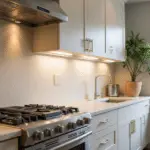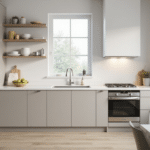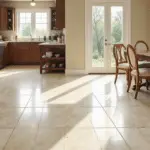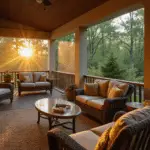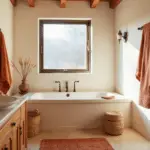Hey there, fellow home decor enthusiasts! It’s Amara here, and today we’re diving into a topic that’s close to my heart: creating a beautifully lit kitchen table. You know, there’s something magical about gathering around a well-lit table, sharing meals and stories with loved ones. But let me tell you, I’ve seen my fair share of lighting faux pas that can turn this cozy scene into a bit of a disaster.
Picture this: you’re hosting a dinner party, and your guests are squinting at their plates, or worse, your homemade lasagna looks like it belongs in a horror movie because of unflattering shadows. Yikes! These kitchen table lighting mistakes can put a damper on your culinary masterpieces and those precious moments with family and friends.
But don’t worry! I’m here to guide you through the common pitfalls and show you how to create a warm, inviting atmosphere that’ll make every meal feel like a special occasion. So, grab a cup of your favorite eco-friendly tea, and let’s shed some light on these illuminating issues!

Common Kitchen Lighting Mistakes
Let’s start by addressing the elephant in the room – those pesky lighting blunders that can turn your kitchen from fab to drab in the blink of an eye.
Overlighting Issues
I remember visiting a friend’s newly renovated kitchen, and wow, it felt like I’d stepped onto the set of a sci-fi movie! The space was so bright, I half expected to see aliens conducting experiments on the kitchen island. Overlighting is like trying to solve a problem by throwing more light at it – spoiler alert: it doesn’t work!
Excessive brightness creates an uncomfortable glare that’ll have your dinner guests reaching for their sunglasses. Not only does it make the space feel clinical and unwelcoming, but it’s also a major energy waste. Mother Earth wouldn’t be too thrilled about that, and neither would your electricity bill!
Oversized Fixtures
Now, I love a statement piece as much as the next designer, but when it comes to lighting fixtures, bigger isn’t always better. I once walked into a kitchen where the chandelier was so massive, I felt like I was in a miniature dollhouse!

Oversized fixtures can dominate your kitchen table area, making the space feel cramped and throwing off the visual balance. It’s like wearing a hat that’s three sizes too big – sure, it makes a statement, but is it the one you want to make? These larger-than-life fixtures can also create annoying shadows and block sightlines, turning your family dinner into an obstacle course.
Wrong Color Temperature
Choosing the wrong color temperature is like picking the wrong filter for your Instagram post – it can completely change the mood of your space. I’ve seen kitchens bathed in cool, bluish light that made the room feel like a sterile laboratory, and others with such warm lighting that everything looked like it had a spray tan!
The right color temperature can make your kitchen feel cozy and inviting, while the wrong one can make your carefully prepared meals look unappetizing. Trust me, no one wants their avocado toast to look gray! Over time, the wrong lighting can even cause eye strain and discomfort. Your eyes deserve better than that, don’t you think?
Ignoring Light Layers
Ignoring light layers is like trying to paint a masterpiece with just one color – it’s flat, uninspiring, and misses out on so much potential! I’ve walked into kitchens where a single overhead light was expected to do all the heavy lifting. The result? A space that felt about as inviting as a waiting room.
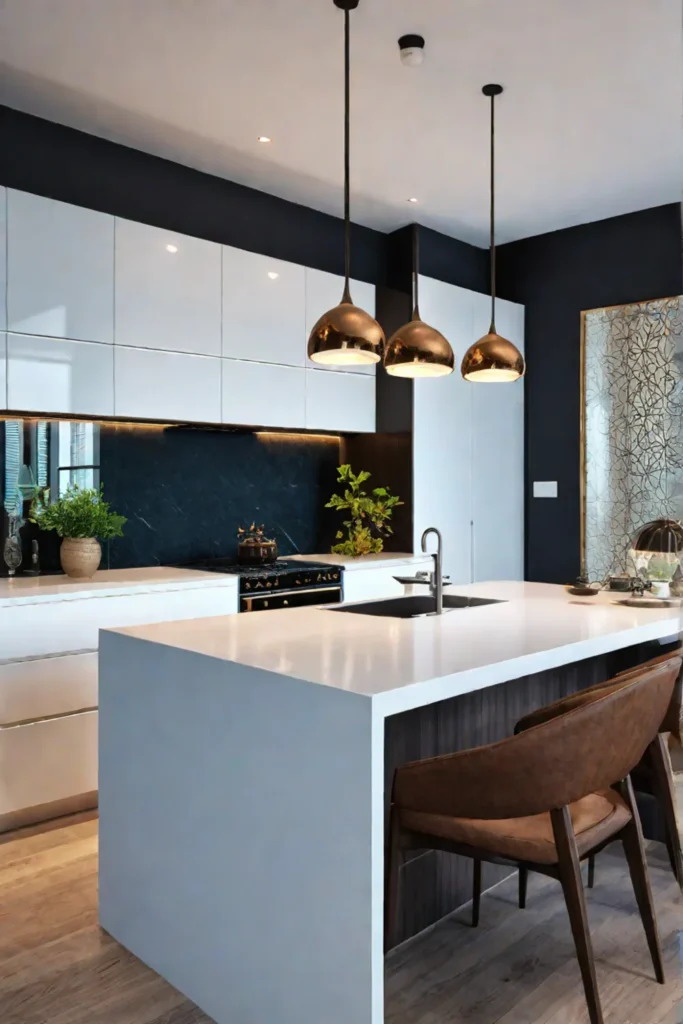
By neglecting to incorporate different layers of light, you’re missing out on the chance to create a dynamic, functional space that adapts to your needs. It’s like having a Swiss Army knife but only using the bottle opener – there’s so much more it could do!
Task Lighting Problems
Alright, now let’s roll up our sleeves and tackle the nitty-gritty of task lighting. After all, your kitchen is a workspace, and you deserve to see what you’re doing!
Insufficient Task Lighting
Have you ever tried to chop vegetables in the shadow of your hand? It’s not fun, and it’s not safe! Insufficient task lighting is like trying to read a book with a candle – you might get by, but it’s not doing you any favors.
Without adequate task lighting, you’re not only making your food prep more difficult, but you’re also increasing the risk of accidents. Nobody wants to end up with a bandaged finger because they couldn’t see what they were chopping! Plus, straining your eyes in dim light can lead to fatigue and headaches. Your culinary adventures should be enjoyable, not a test of your night vision!
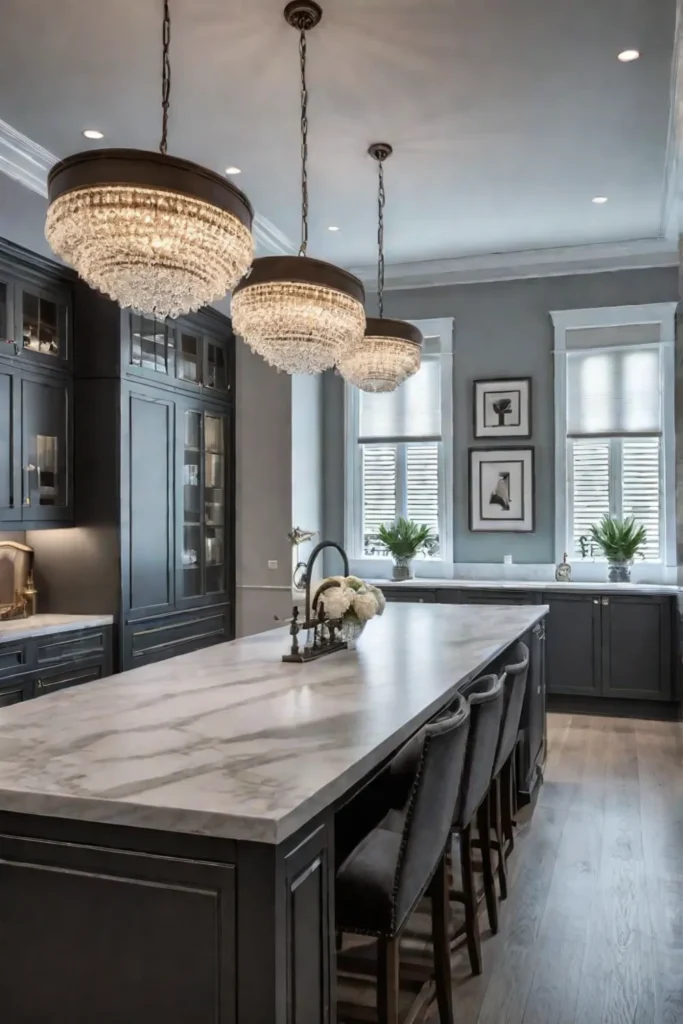
Misplaced Task Lights
Placing task lights in the wrong spots is like trying to read a book while someone shines a flashlight in your eyes – not very helpful, right? I once visited a kitchen where the under-cabinet lights were installed backward, illuminating the backsplash beautifully but leaving the countertop in shadow. Talk about missing the point!
Poorly positioned task lights can create more problems than they solve. They might cast shadows right where you need to see or create glare that makes it hard to focus. The goal is to illuminate your work areas, not create a light show on your walls!
Overlooking Counter Areas
Neglecting to light your counter areas properly is like forgetting to put on your glasses before reading – you’re missing out on crucial details! I’ve seen stunning kitchens with gorgeous countertops that disappear into darkness because no one thought to light them properly.
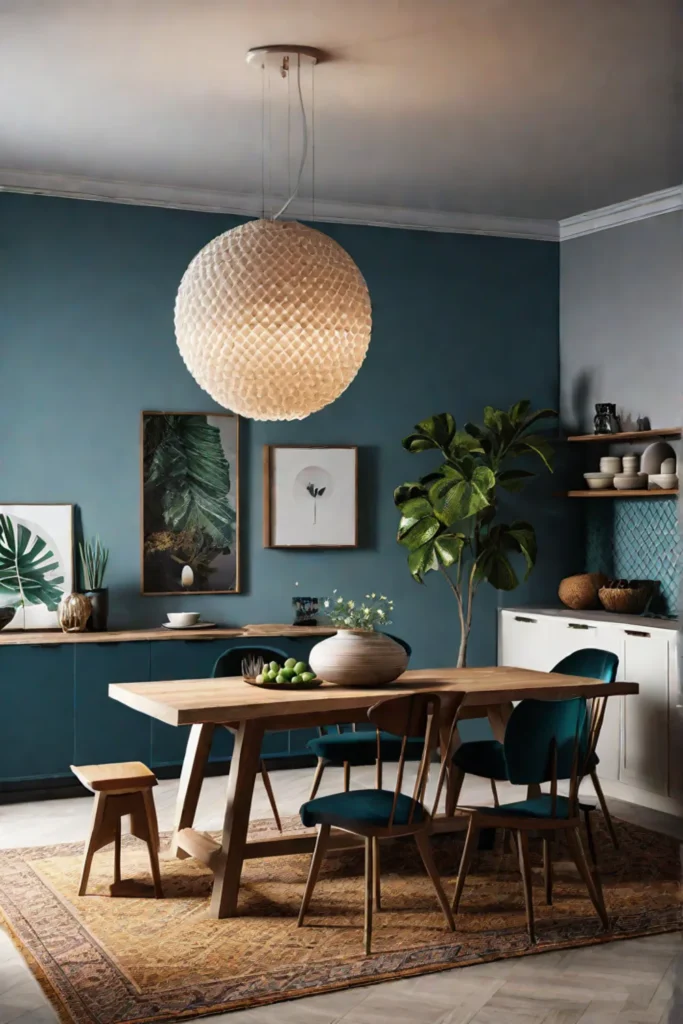
Well-lit counters aren’t just about aesthetics (although they do make your beautiful quartz or sustainable bamboo shine!). They’re essential for safe and efficient food prep. Trying to work on a dimly lit counter is frustrating at best and dangerous at worst. Plus, good lighting in these areas can highlight the textures and colors of your ingredients, making cooking a more vibrant and enjoyable experience.
Light Fixture Sizing
Now, let’s talk about getting the size just right. Choosing the perfect light fixture is a bit like Goldilocks finding the right bed – it shouldn’t be too big, too small, but just right!
Too Large Fixtures
Oversized light fixtures are like wearing a ball gown to a casual backyard barbecue – they’re beautiful, but completely overwhelming in the context. I once saw a kitchen with a chandelier so large, it looked like it was trying to devour the dining table!
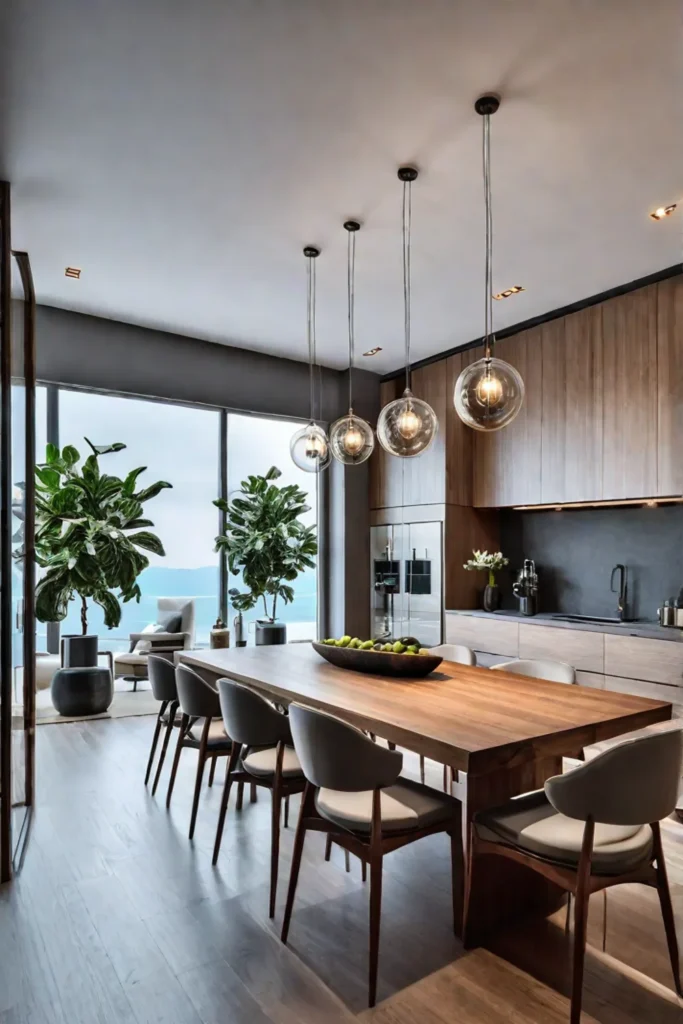
When your light fixture is too big, it can dominate the space, making your kitchen feel smaller and more cluttered than it is. It’s not just about looks, either – a too-large fixture can obstruct views and make it difficult for people to move around comfortably. Remember, we want to illuminate your kitchen, not turn it into an obstacle course!
Too Small Fixtures
On the flip side, fixtures that are too small can leave your kitchen table area feeling underwhelming and poorly lit. It’s like trying to light up a stadium with a desk lamp – cute, but not quite up to the task.
I’ve seen beautiful, spacious kitchens with tiny pendant lights that looked lost and lonely above the table. Not only do these undersized fixtures fail to provide adequate illumination, but they also miss the opportunity to make a stylish statement. Your lighting should be both functional and fabulous!
Incorrect Placement
Even if you’ve chosen the perfect size fixture, placing it incorrectly can throw everything off balance. It’s like hanging a beautiful piece of art… at ankle height. I once visited a kitchen where the light was centered over the table, but the table wasn’t centered in the room. The result? A visual tension that made the whole space feel off-kilter.
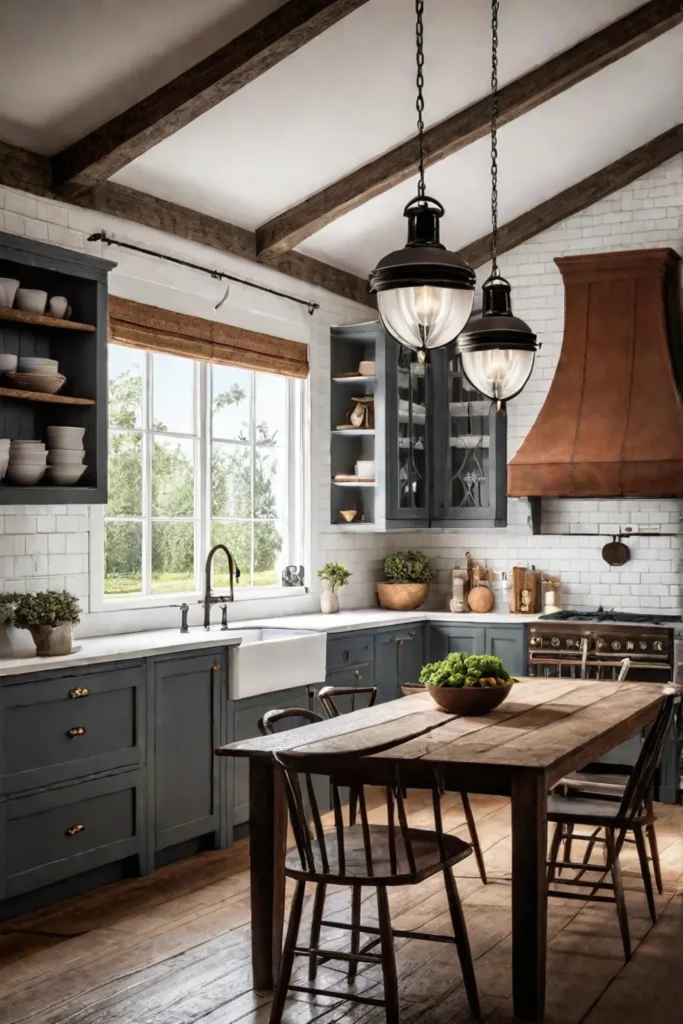
Proper placement is crucial for even light distribution and visual harmony. Whether you’re choosing pendant lights over a kitchen table or installing recessed lighting, the position of your fixtures can make or break the overall look and functionality of your space.
Layered Lighting Importance
Let’s talk about layering – and I don’t mean clothes! Layered lighting is the secret sauce that can take your kitchen from “meh” to marvelous.
Ambient Lighting
Ambient lighting is like the bass line in your favorite song – it sets the foundation for everything else. This is the general illumination that fills your kitchen, allowing you to navigate the space safely and comfortably.
I love using ambient lighting to create a warm, welcoming atmosphere in the kitchen. It’s like giving your space a big, comforting hug! Without good ambient lighting, your kitchen can feel cave-like and uninviting, no matter how stylish your decor is.
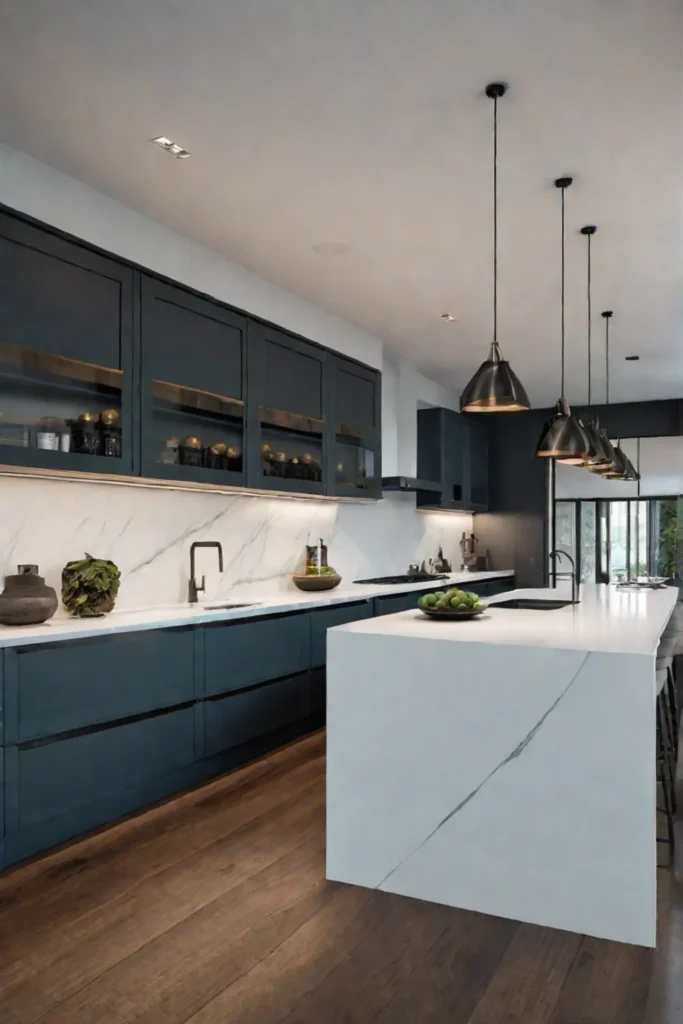
Task Lighting
Task lighting is your kitchen’s assistant, always there to help you get the job done. This focused lighting is essential for food prep areas, cooktops, and yes, your kitchen table!
I can’t stress enough how important good task lighting is. It’s the difference between confidently dicing onions and wondering if you’re about to dice your fingertips! Plus, when you’re sitting at the table paying bills or helping kids with homework, you’ll be thankful for that clear, focused light.
Accent Lighting
Accent lighting is the jewelry of your kitchen – it adds that extra sparkle that takes your space from functional to fabulous. This layer of lighting is all about highlighting the best features of your kitchen and adding depth to the space.
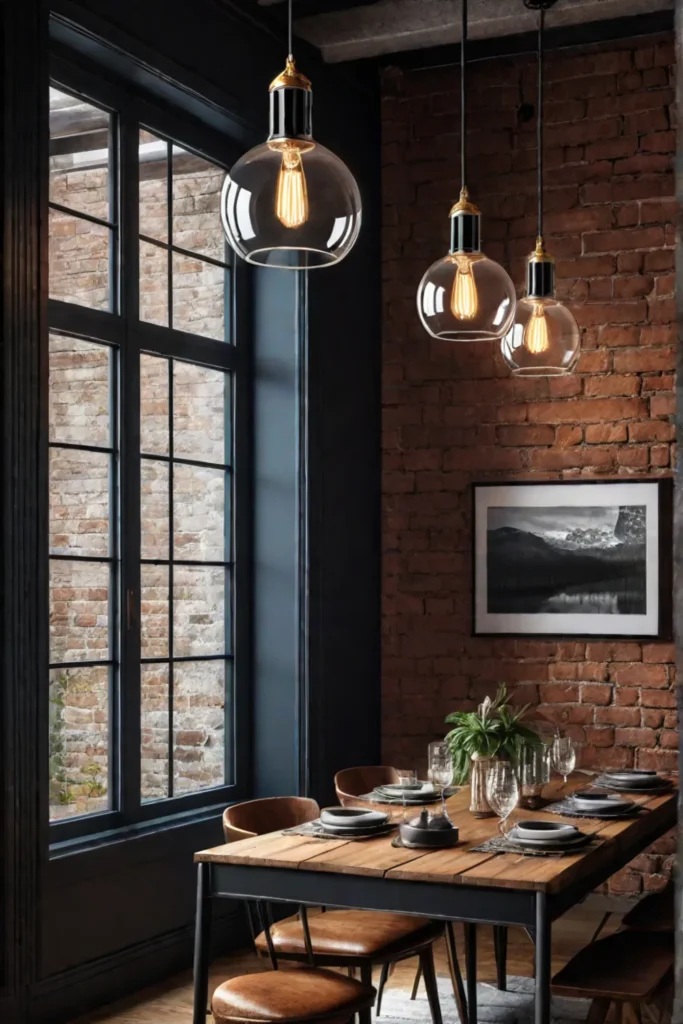
I love using accent lighting to draw attention to beautiful architectural details, artwork, or even a collection of vintage plates. It’s like using a highlighter to emphasize the best parts of your kitchen’s “story”!
Using Dimmers Effectively
Dimmers are like the volume control for your lights – they give you the power to set the perfect mood for any occasion. Let’s explore how to make the most of these magical switches!
Benefits of Dimmers
Dimmers are the unsung heroes of kitchen lighting. They’re like having a lighting designer at your fingertips, ready to adjust the ambiance at a moment’s notice. I love how dimmers can transform a bright, energetic cooking space into a cozy, intimate dining area with just a twist of a knob.
But it’s not just about creating mood lighting for your romantic dinners (although that’s a delightful perk!). Dimmers also help you save energy and extend the life of your bulbs. It’s a win-win for your wallet and the planet! Plus, being able to adjust the light intensity means you can always find the perfect brightness for any task, from reading the fine print on a recipe to enjoying a late-night snack.
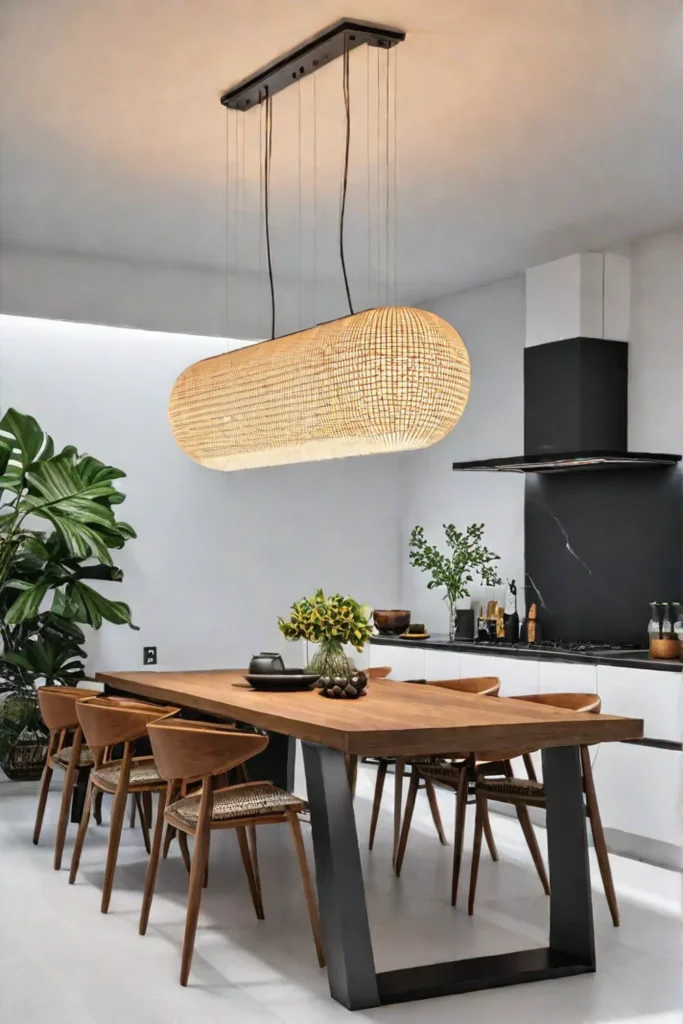
Where to Install Dimmers
When it comes to installing dimmers, I like to think of it as giving each area of your kitchen its spotlight control. The main overhead lights are an obvious choice – they set the overall tone for the space. But don’t stop there!
Consider adding dimmers to your pendant lights over the kitchen table, under-cabinet lighting, and even accent lights. This way, you can create layers of adjustable light that can be fine-tuned for any occasion. Imagine being able to dim the lights over your breakfast nook for a cozy morning coffee, then brighten them up for a lively family brunch. It’s like having a lighting Swiss Army knife at your disposal!
Choosing the Right Dimmer
Selecting the right dimmer is crucial – it’s not a one-size-fits-all situation. It’s like choosing the right pair of jeans; you need to find the perfect fit for your needs and your fixtures.
First, make sure your dimmer is compatible with your light bulbs. LED bulbs, for instance, often require specific types of dimmers to avoid that annoying flickering effect. Nobody wants their kitchen to feel like a disco!
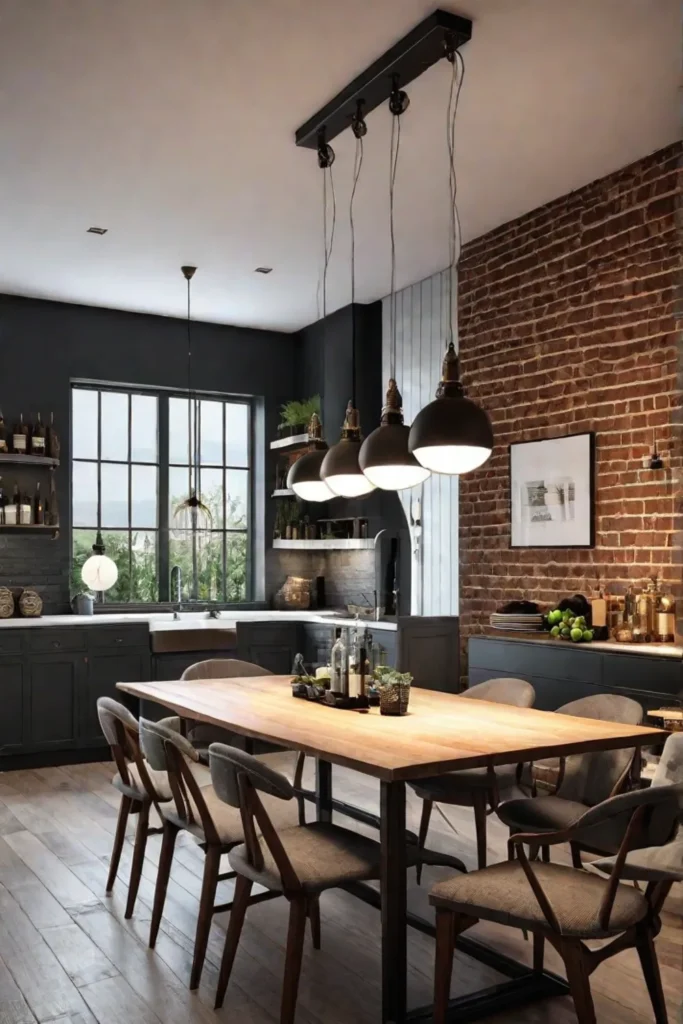
Also, pay attention to the wattage rating of your dimmer. It needs to be able to handle the total wattage of all the bulbs it’s controlling. Think of it like choosing a pot that’s big enough for your pasta – you need the right capacity to avoid a mess!
Lastly, consider the style and functionality of the dimmer. Do you want a simple slider, a rotary knob, or maybe even a smart dimmer you can control with your phone? Choose something that’s easy for you to use and fits with your kitchen’s aesthetic. After all, even the most functional tools can be beautiful too!
Final Remarks
Whew! We’ve covered a lot of ground, haven’t we? From avoiding the pitfalls of overlighting to embracing the magic of dimmers, we’ve illuminated the path to a perfectly lit kitchen table area. But remember, at the end of the day, the most important thing is creating a space that feels right for you and your family.
Your kitchen is more than just a place to cook – it’s the heart of your home, where memories are made and shared over delicious meals. The right lighting can enhance these moments, making every dinner feel special and every breakfast a bright start to the day.
So, I encourage you to take a fresh look at your kitchen lighting. Is it serving you well? Could it use a little tweaking? Don’t be afraid to experiment! Move a lamp, adjust a fixture, or play with your dimmer settings. Sometimes, the smallest changes can make the biggest difference.
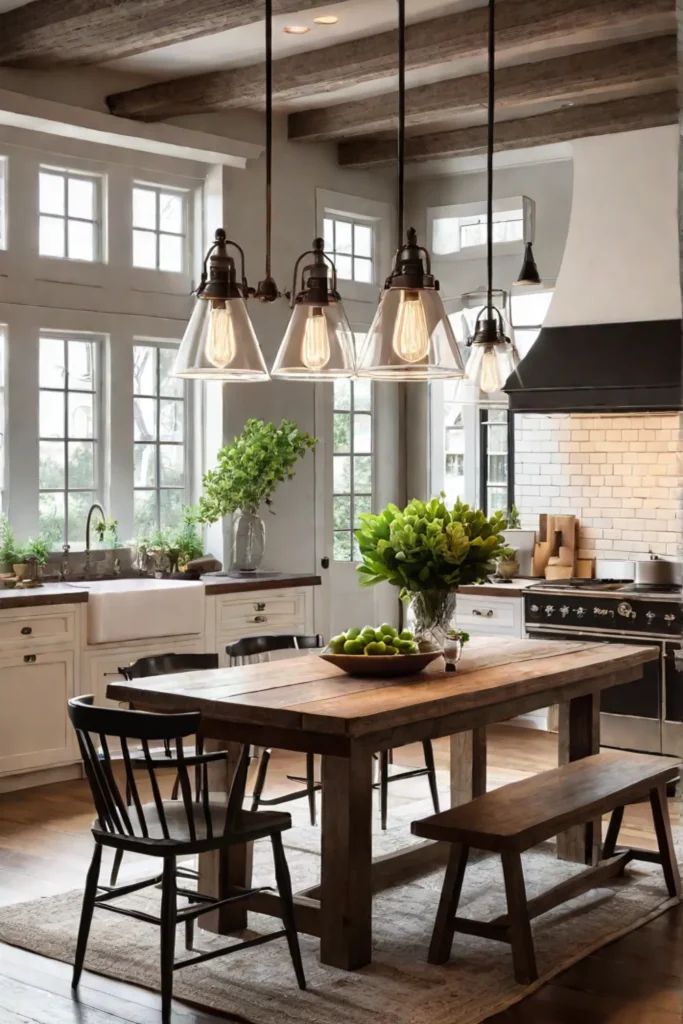
And hey, if you’re feeling inspired to make some bigger changes, why not start planning your kitchen lighting makeover? Whether it’s upgrading to energy-efficient LEDs, installing that gorgeous pendant light you’ve been eyeing, or finally adding those under-cabinet lights, every step towards better lighting is a step towards a more beautiful, functional, and inviting kitchen.
Remember, creating a well-lit kitchen is a journey, not a destination. As your needs change and your style evolves, don’t be afraid to adjust your lighting accordingly. After all, the best kitchens are those that grow and change with us, always ready to shine a light on life’s most delicious moments.
So go ahead, flip that switch, and let your kitchen shine in all its glory. Here’s to bright ideas, warm gatherings, and kitchens that light up our lives – one beautifully illuminated meal at a time!


